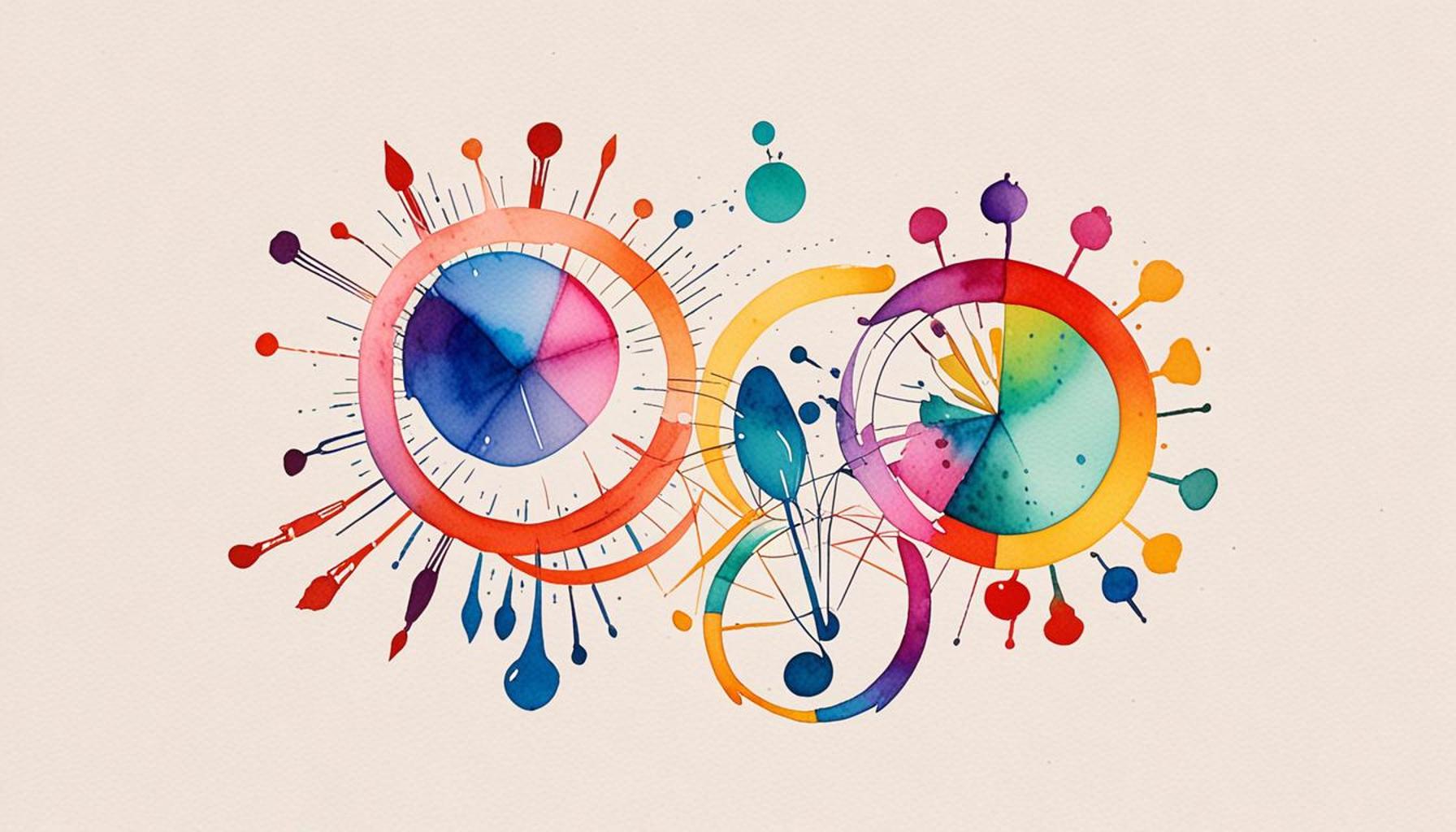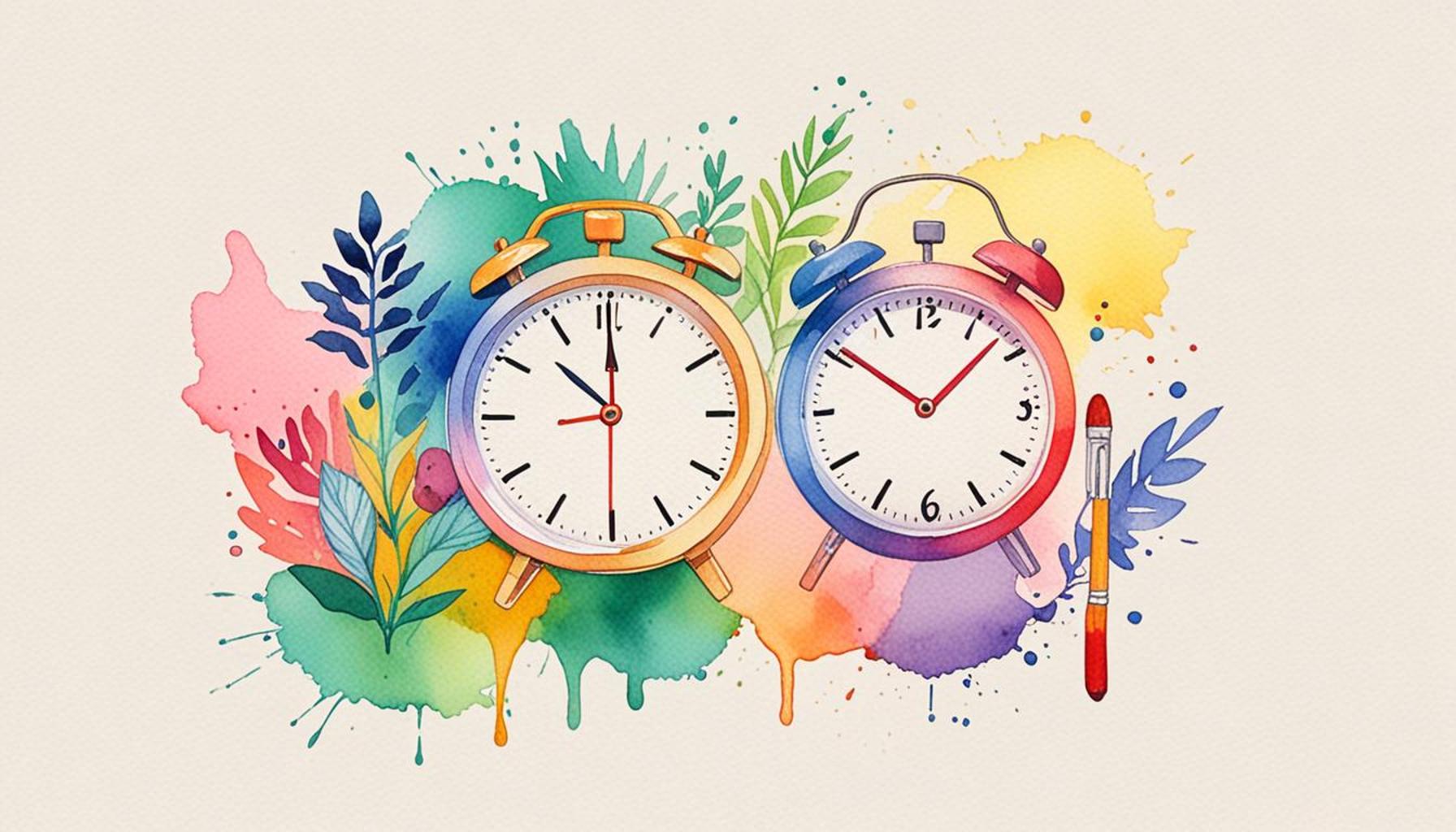Space for the Essential: Creating an Environment that Enhances Time Management

The Importance of an Organized Workspace
In today’s fast-paced world, managing time effectively has never been more crucial. A well-organized space can be the key to unlocking your productivity potential. By creating an environment tailored to your needs, you can enhance focus and make the most out of every minute.
Consider these significant aspects when crafting your ideal workspace:
- Decluttered Surfaces: A tidy desk minimizes distractions, allowing for greater concentration. Studies show that a cluttered environment can lead to feelings of anxiety and being overwhelmed. By keeping only essential items on your desk, such as a computer, notepad, and a few personal touches, you create a calming atmosphere that promotes focus. You might even find it helpful to employ organizers or storage solutions to keep miscellaneous items out of sight.
- Functional Layout: Positioning essential tools within arm’s reach fosters efficiency. For example, placing your printer beside your desk can significantly reduce the time spent searching for documents or running back and forth. Additionally, utilizing vertical space for shelving can keep your desk clear while ensuring that important resources are readily accessible, thereby minimizing disruptions to your workflow.
- Personal Touches: Incorporating personal items can boost motivation and overall well-being. Decorate your workspace with photos, artwork, or plants that inspire you. Research suggests that elements such as plants can improve air quality and increase feelings of happiness, which in turn, enhances productivity. A personalized workspace not only reflects your personality but also encourages you to spend more time in an environment that feels welcoming and engaging.
Moreover, psychological factors play a pivotal role in this equation. According to research, surroundings that promote comfort can reduce stress and enhance cognitive function. Creating spaces that reflect order and clarity is not just an aesthetic choice; it impacts how we manage time and tasks. In fact, organizations consistently report that employees in well-organized environments demonstrate higher levels of efficiency and job satisfaction.
As you delve deeper into the art of time management, remember that your environment is not merely a backdrop; it can actively shape your habits and productivity levels. The next sections will uncover strategies to design a space that prioritizes the essential, allowing you to harness your time effectively. By understanding the influence of your surroundings, you can make informed choices that transform your workspace into a powerful tool for managing your time and achieving your goals.
DISCOVER MORE: Click here to enhance your home office

Elements of an Efficient Workspace
Creating an efficient workspace is not just about aesthetics; it is a foundational step towards effective time management. Several elements come into play that can significantly enhance your productivity and foster a workspace that aligns with your goals. Let’s explore some critical components that contribute to an efficient workspace, enabling you to maximize every moment.
Ergonomic Considerations
Your physical comfort is paramount when it comes to maintaining focus and productivity throughout the day. Investing in ergonomic furniture, such as an adjustable chair and a desk at the right height, can prevent strain and fatigue. Research indicates that a comfortable setup can lead to better concentration and reduced distractions. Additionally, positioning your computer monitor at eye level can help maintain healthy posture, allowing you to work longer hours without discomfort, which, in turn, enhances your time management capabilities.
Integrating Technology
Technology plays a vital role in streamlining tasks and organizing workflows. From project management software to digital calendars, leveraging the right tools can help you plan your day effectively and prioritize your tasks. Consider adopting applications that sync across all your devices, ensuring that you have access to your schedules and reminders anywhere, anytime. Not only does this streamline communication with team members, but it also aids in tracking deadlines and progress, ultimately enhancing your overall time management strategy.
Lighting and Ambiance
The presence of appropriate lighting can substantially influence your workspace’s effectiveness. Natural light has been shown to significantly boost mood and energy levels, which can foster creativity and productivity. If natural light is limited, opting for adjustable artificial lighting can help create a comfortable atmosphere. Bright but soft lighting can reduce eye strain and keep you alert, while dimmer lighting can be conducive to relaxation during breaks. A well-lit workspace not only enhances your alertness but also plays a substantial role in how you manage your time effectively.
Organizational Systems
Establishing an organizational system tailored to your working style is essential in enhancing your productivity. Here are a few strategies to consider:
- Color-Coding: Use colors to differentiate between types of tasks or projects. This visual cue allows for rapid identification and prioritization.
- Task Boards: Implement a physical or digital board to track progress on ongoing tasks. This provides a clear overview of what needs attention today versus what can wait.
- Weekly Reviews: Set aside time each week to assess completed tasks and plan for upcoming ones. Such reviews can amplify your focus and provide a better understanding of your time utilization.
By thoughtfully incorporating these elements into your workspace, you can create an environment that not only enhances your productivity but also significantly improves your time management skills. The next steps delve deeper into specific strategies that can further refine your workspace and align it with your unique working style.
| Advantage | Description |
|---|---|
| Focus on Priorities | Creating dedicated spaces for specific tasks encourages individuals to focus on priority activities without distractions. |
| Enhanced Productivity | A well-organized environment can significantly enhance productivity by allowing seamless transitions between tasks. |
| Stress Reduction | Minimizing clutter creates a calming atmosphere, ultimately reducing stress and fatigue during work hours. |
| Time Optimization | Efficient space design can lead to optimized workflows, utilizing time better and allowing for more effective task management. |
The intricate relationship between space and time management cannot be overlooked. It serves not only to streamline daily tasks but also to foster a more manageable and engaging work atmosphere. The right environment can transform your routine by aiding in prioritization and boosting productivity, enabling you to achieve your goals with less effort. Embracing these concepts will undoubtedly elevate your efficiency, paving the way for a more structured and organized approach toward time management. As you delve deeper into creating your ideal workspace, consider how favorable design elements can enhance your focus and reduce stress, ultimately leading to better time optimization. Recognizing these attributes highlights the value of cultivating an environment that truly supports the essentials in your life.
DISCOVER MORE: Click here to dive deeper</p
Additional Strategies for Workspace Enhancement
While the foundational elements of an efficient workspace lay the groundwork for improved time management, there are additional strategies that can further refine your environment, enhancing not only your productivity but also your overall work experience. Let’s delve into practical approaches that can transform your workspace into a hub of efficiency and focus.
Sound Management
The role of acoustics in a workspace is often underestimated. Background noise can be a significant distraction that hinders effective time management. To combat this, consider using soundproofing materials or partitions to create a quieter environment. Noise-cancelling headphones are another excellent option, allowing you to immerse yourself in your tasks without the disturbance of surrounding sounds. For some, listening to ambient music or white noise can improve focus and stimulate productivity. Establishing your optimal auditory environment can keep you on task and reduce the time lost to distractions.
Personalization
Your workspace should reflect your personality and preferences. Personalizing your work environment not only creates a sense of belonging but can also boost creativity and morale. Incorporate elements that inspire you, whether that might be a few framed photos, meaningful quotes, or art pieces. The inclusion of plants has also gained popularity—studies suggest that greenery can improve air quality and enhance mood, further contributing to productivity. Personal touches can create a stimulating atmosphere that makes time spent working feel more engaging and less monotonous.
Decluttering and Minimalism
A cluttered workspace can lead to a cluttered mind. Adopting a minimalistic approach to your workspace can significantly enhance clarity and focus. Start by assessing your items: keep only those that are essential and serve a specific purpose. Utilize storage solutions that minimize visible clutter—think drawer organizers, filing cabinets, and shelving. Regularly scheduled decluttering sessions can help maintain the tidiness of your environment. An organized space promotes a clear mindset, allowing you to devote your energies to tasks without unnecessary distractions.
Flexible Zones for Varied Tasks
Creating distinct zones within your workspace for different activities can optimize how you manage your time. Consider setting aside specific areas for focused work, collaborative discussions, and brainstorming sessions. This spatial organization can cue your brain to transition between different types of tasks more effectively. Each zone can be tailored to minimize distractions and equip you with the tools needed for that particular task, thereby enhancing efficiency. For example, an area designated for quiet reflection can have minimal external distractions, while a collaborative zone might include whiteboards for brainstorming and creative problem-solving.
Balancing Technology with Mental Breaks
While integrating technology into your workspace can improve productivity, it’s also essential to address the need for mental breaks to maintain long-term focus. Implement techniques such as the Pomodoro Technique, which advocates for working in focused bursts—typically 25 minutes—followed by a 5-minute break. Use this time to step away from your desk, stretch, or engage in a quick walk to reset your mental state. These small intervals can significantly improve your concentration and help prevent burnout as you manage your tasks more efficiently throughout the day.
By embracing these additional strategies, you can cultivate a workspace that truly enhances your time management prowess. The thoughtful integration of sound management, personalization, minimalism, zoning, and regular breaks can dramatically alter how you approach your daily tasks, leading you to utilize your time more purposefully and effectively.
DISCOVER MORE: Click here for insights on time management
Conclusion: Crafting Your Ideal Workspace
In the quest for enhanced time management, the design and organization of your workspace can be a game-changer. As we explored, creating an environment that minimizes distractions, fosters creativity, and optimizes focus is essential for anyone looking to maximize their productivity. By incorporating elements such as effective sound management, personal touches, and a minimalistic approach, individuals can transform their workspaces into sanctuaries of productivity.
Moreover, implementing distinct zones for various tasks encourages a dynamic workflow that caters to the diverse nature of modern work. The strategic positioning of furniture and tools can significantly lessen the cognitive load of switching between tasks—an often-overlooked aspect of time management. Just as vital are the mental breaks that rejuvenate and maintain the quality of focus; techniques like the Pomodoro Technique can aid in making those breaks intentional and effective.
Ultimately, understanding that your workspace is an extension of your work style is crucial. By actively curating an environment that prioritizes the essentials—whether through improved acoustics, flexible zones, or thoughtful personalization—you pave the way for a more intentional approach to time management. In today’s fast-paced world, where every second counts, taking the time to optimize your workspace can yield exponential benefits, leading not just to greater efficiency but also to a more fulfilling work experience overall. As you take the next steps in crafting your workspace, remember that the power to manage your time effectively lies within a thoughtfully designed and personalized environment.


